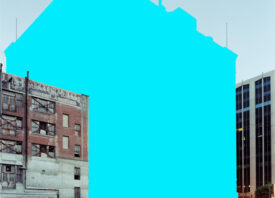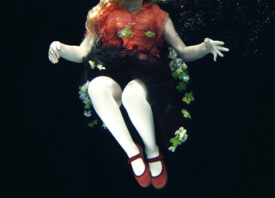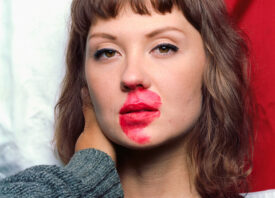Search this site
‘Humanae’ Portraits Match People of Different Ethnicities With Their Pantone Color
Brazilian fine art photographer Angelica Dass‘ series Humanae identifies portrait subjects from around the world using the Pantone color system. Using an 11×11 pixel swatch from her subjects’ faces, Dass matches them to corresponding Pantone colors, creating an abundant and unique catalog of skin tones that reflects the world’s diversity beyond the categorizations we have long been confined to. We recently asked her more about the ongoing project.


What was your inspiration for using Pantone colors to represent humans?
“If what I wanted was to destroy the concepts of colors associated with race, such as red, yellow, white and black, it would not be logical to use a color scale that works with percentages of these colors. That’s why I chose not to use CMYK or RGB. Pantone works on a neutral scale, where a color has no more importance than another. It’s a very identifiable scale for those in the world of design, but also easily understood by anyone. It provides a way to look objectively at the ‘human object.'”


How do you go about finding subjects for your work and what are the criteria you are looking for?
“There is no selection criteria. I make public announcements through social networks. To ensure diversity in the project, I work at spaces that are not only in the art world, too. The 2000 images in the project have been made in galleries and art fairs, but also in urban favelas, in NGOs, at the headquarters of UNESCO, and in cooperatives that work with the homeless.
“Not only are there a mix of faces and colors, but a mix of social classes, religions, sexual orientations, political elections, economic status—together in Humanae we cannot be confined to these codes. So far I have taken portraits in seven cities: Madrid, Barcelona, Winterthur, Rio de Janeiro, São Paulo, Paris, and Chicago. My minimum goal is to make portraits on all the five continents.”


By identifying your subjects by Pantone color rather than ethnicity/color of origin/name/occupation, etc., what commentary do you hope to make about their identities and the relationship between them?
“It is a kind of game for subverting our codes. The ultimate goal is to provoke discussion about ethnic identity, creating images that lead us to identify each other independent from factors such as nationality, origin, economic status, age, or aesthetic standards. The most important thing for me is the dialogue Humanae has generated outside of the existing conversation. For example, Humanae has been used in educational textbooks by teachers who use it as a tool to talk about equality, appropriation for new artists who are interested in the physiognomic variety in the project, or scientists who use it to illustrate their research.”
Since the Pantone system is a highly structured and ordered system, how does your display of the work relate to this system?
“The project is exhibited in different ways, but always messy numerically. The aim isn’t to make a color scale from light to dark. The intention is to make it like real life—all together, and mixed. Each time I exhibit, I always try to make new portraits, to continue adding images to a work in progress.”






